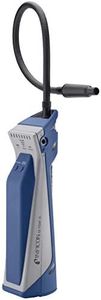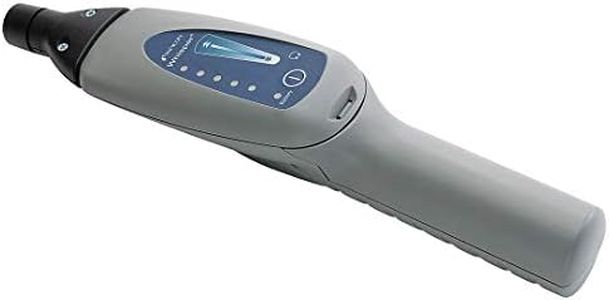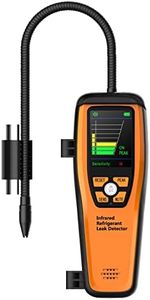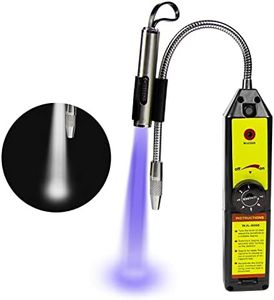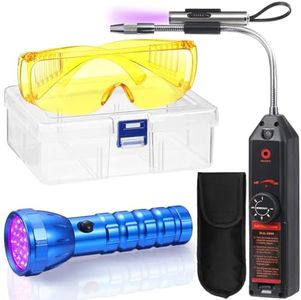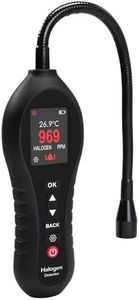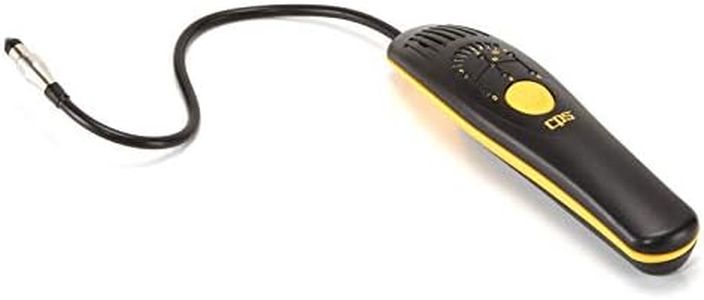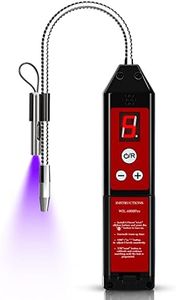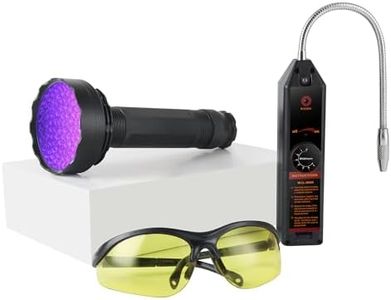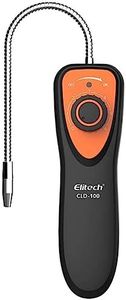We Use CookiesWe use cookies to enhance the security, performance,
functionality and for analytical and promotional activities. By continuing to browse this site you
are agreeing to our privacy policy
10 Best Refrigerant Leak Detectors
From leading brands and best sellers available on the web.Buying Guide for the Best Refrigerant Leak Detectors
Choosing the right refrigerant leak detector can make a big difference in how easy, safe, and effective your maintenance and repair tasks are. When evaluating which one to buy, understand your own needs—whether you use it for small home HVAC work, larger commercial projects, or automotive applications. The right detector should fit the type of refrigerant systems you usually work on and your preferred way to operate. By understanding the main features and what they mean, you’ll be able to find a detector that matches your skills, keeps you safe, and works reliably in the environment you need.Detection MethodThe detection method refers to the technology the detector uses to sense refrigerant leaks. The most common methods are heated diode, infrared, and electrolyte sensors. Heated diode models are sensitive and good for detecting most refrigerants, but may react to other substances. Infrared sensors are less prone to false alarms and work well for detecting specific types of refrigerants. Electrolyte sensors tend to be more affordable and great for general use. If you work in varied environments or want fewer false alarms, infrared might suit you better; for general home or car use, a heated diode or electrolyte option can be perfect.
Sensitivity LevelSensitivity level tells you the smallest amount of refrigerant the detector can sense, usually measured in parts per million (ppm). Higher sensitivity (lower ppm numbers) means the detector can spot even tiny leaks, which is crucial for precision jobs or complying with regulations. Some detectors let you adjust the sensitivity: low for searching broad areas quickly, and high for pinpointing exact leak spots. For detailed professional work, a higher-sensitivity unit is recommended; for basic checks, medium sensitivity will often suffice.
Compatible Refrigerant TypesNot all detectors work with every kind of refrigerant. Some are designed to detect common household or automotive refrigerants (like R134a or R410A), while others support a wide range for commercial or specialty use. Check the types of refrigerant you typically work with and ensure your detector is compatible with them. If you handle various systems, opt for a universal or multi-gas detector; for home or vehicle work, a standard type may be enough.
Response TimeResponse time measures how quickly the detector alerts you when it finds a leak. Faster response times make it easier to move through a system and find leaks without waiting. If you often need to check many components quickly or in tight spaces, go for a detector with a fast response. For occasional or slower-paced work, a moderate response time is usually sufficient.
Ease of UseEase of use covers how simple it is to operate the detector, including factors like button layout, display readability, and probe flexibility. If you’re new to using detectors or need to work one-handed, a model with intuitive controls and a clear digital display can save you effort and reduce error. Experienced users who work in challenging areas might prefer those with long, flexible probes or audio feedback.
Durability and Build QualityDurability means how well the detector can handle drops, dust, or exposure to elements. For regular professional or outdoor use, pick a detector with sturdy construction and possibly a water-resistant or rugged design. For light home applications, high-end durability might be less important, but still consider basic build quality for lasting performance.

